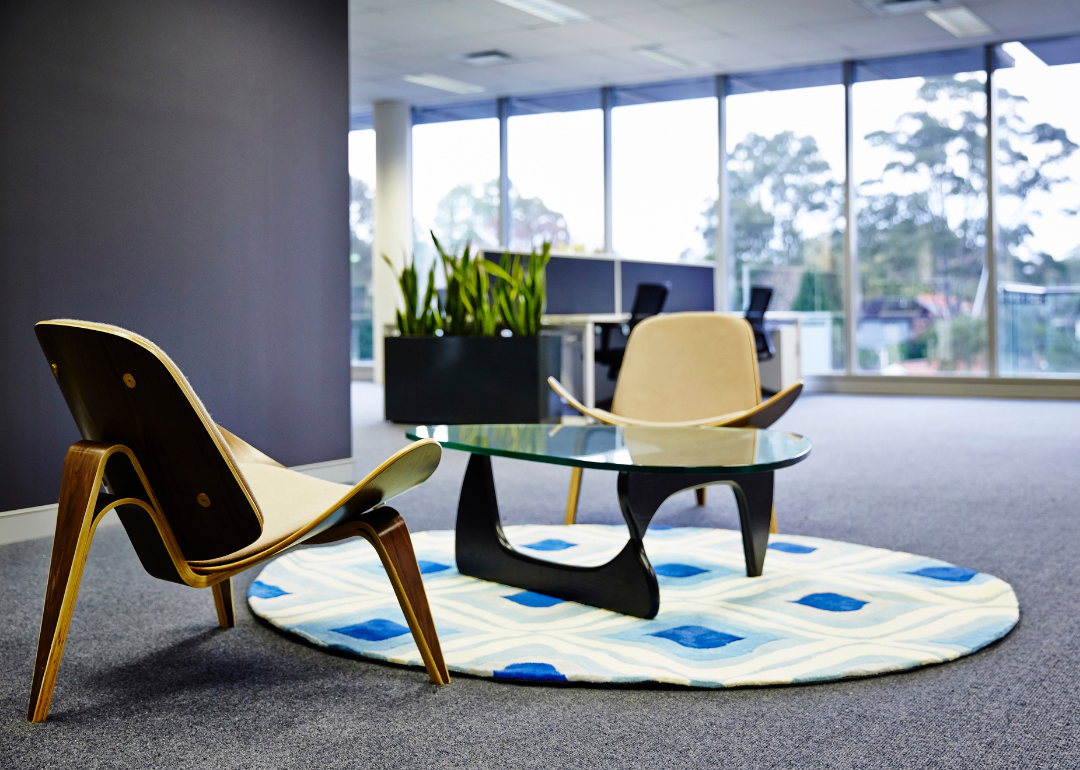Tristan Fewings/Getty Images for Barbican Art Gallery From egg chairs to mushroom lamps, much of the most ubiquitous furniture used in today’s homes has its roots in the last century, when designers were creating singularly modernist furniture designs that relied on clean lines, sleek silhouettes, and economy of space. Many modern designs today spotted on social media, popularized by massive furniture chains, or splashed on magazine covers can trace their roots back to the 20th century. Lazzoni Modern Furniture compiled a list of iconic, 20th-century designs still used in modern furniture today, using different sources such as Vogue, Design Addict, Highsnobiety, and Soulful Suburb to revisit their origins as well as how and where they are present nowadays. Florence Knoll sofa View Pictures/Universal Images Group via Getty Images Florence Knoll co-founded Knoll Associates Inc. with her husband Hans and eventually took over after he died in a 1955 car crash. Her legacy helped define the office aesthetic of the 1950s and ’60s–think the sleek modern offices of “Mad Men.” Knoll’s iconic designers include giants such as Mies van der Rohe and Eero Saarinen. Her couch, in particular, is one of the more iconic pieces of the company, incorporating clean lines and a mix of textiles and steel that went on to define modernism. 606 universal shelving system Canva Stroll through any modern design shop and you’re likely to come across dozens of the 606 shelving system’s descendants. Conceptualized by German designer Dieter Rams in 1960, the system remains a classic because of its flexibility. Simple components such as shelves, cabinets, and tables can be attached to an aluminum track in many combinations, adapting to the life stage of its owner. It’s no wonder the design is alive and well more than six decades after its conception. Wassily chair Roman Belogorodov // Shutterstock Inspired by the lightness and strength of his first bicycle, Marcel Breuer thought to create a chair using tubular light steel. “It is my most extreme work both in its outward appearance and in the use of materials; it is the least artistic, the most logical, the least ‘cosy’ and the most mechanical,” he said. His design–leather strips stretched over a steel tube frame–was a distilled version of the club chair that would prove to be popular the world over. Breuer later named the chair after abstract artist Wassily Kandinsky, the first to see his design. Saarinen dining set Kühn/ullstein bild via Getty Images The Finnish architect known for the St. Louis Gateway Arch’s elegant lines is also the man behind this dining set, which consists of tables and accompanying chairs. Looking to fix “the ugly, confusing, unrestful world” underneath chairs and tables, Eero Saarinen introduced the Pedestal collection, featuring a single graceful leg that flowed to a circular base. The design continues to be a favorite and inspires many to come out with their own versions. Noguchi Akari light View Pictures/Universal Images Group via Getty Images The traditional methods used to create Japanese Gifu lanterns, which Noguchi observed when he visited the town of Gifu in 1951, inspired the Akari light. Rather than use a traditional candle, the designer’s modern interpretation includes electricity and a more sculptural form, which be twisted or angled. Noguchi called his design “akari,” which means “illumination,” alluding to the lamp’s function and weightless character. The Japanese American designer made more than 100 models over his lifetime, ranging from small tabletop versions to tall living room-appropriate sizes. While many have imitated the pared-down, simplistic design, only those stamped with the red sun-and-moon logo are the real deal. Barcelona chair by Mies van der Rohe Jana Bauch/picture alliance via Getty Images) Mies van der Rohe was known for his “less is more” mantra, which translates to this iconic chair. Designed for the German Pavilion at the Barcelona Exposition of 1929, the original chair consists of two chrome-plated, flat steel bars where a seat and a chair back were cantilevered. The Spanish king was set to attend the Exposition, which pressured Rohe to design a chair made for royalty. “The government was to receive a king…The chair had to be…monumental. In those circumstances, you just couldn’t use a kitchen chair,” Rohe said. Though he only created two Barcelona chairs for the German Pavilion, the design was put into production and, except for 16 years, has been manufactured continuously since 1929. Egg chair
12 iconic 20th-century designs still used in modern furniture today















